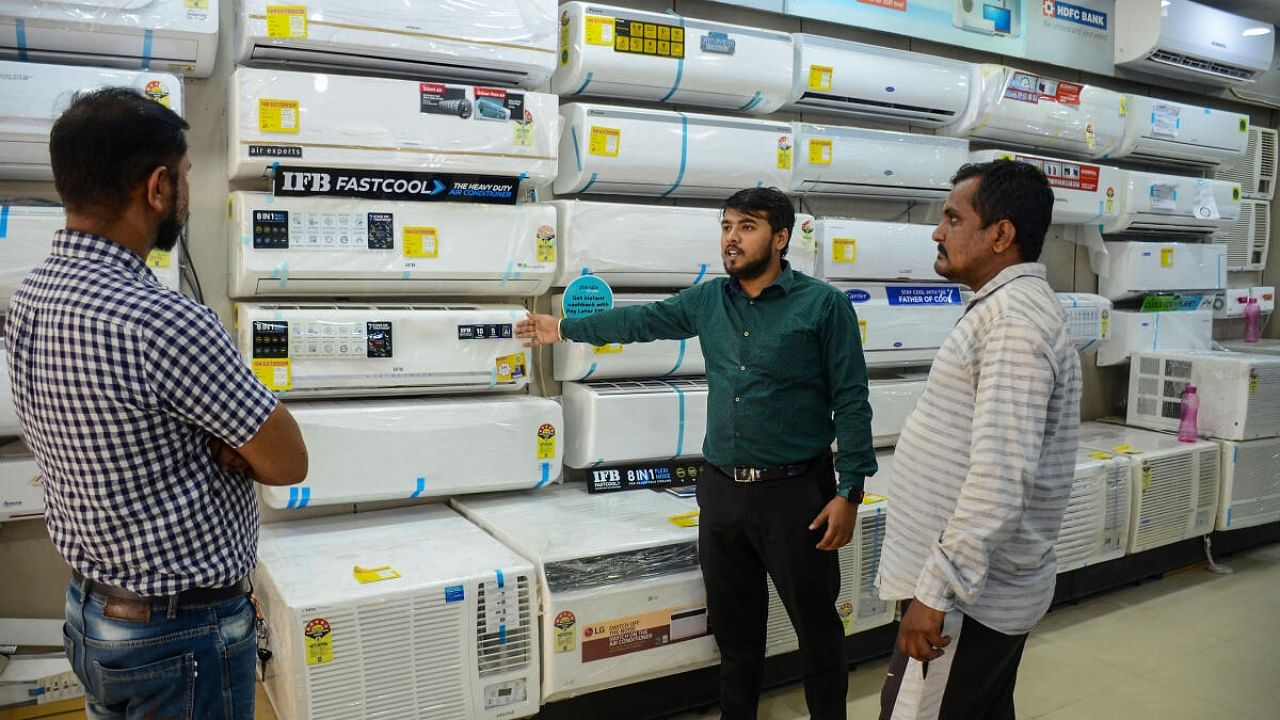
By Lara Williams
It’s a good time to be in the air-conditioning business.
As my colleagues at Bloomberg News write, an additional 1 billion cooling units are expected to be installed by the end of the decade. It’s one of the main ways in which humans are adapting to more frequent and intense heatwaves.
With a potentially strong El Nino on the horizon – a climate pattern which increases global temperatures – and greenhouse gas emissions still higher than ever, we’re looking at another record-breaking summer, and another one, and another and so on.
For many, owning an air conditioner has already become a matter of survival rather than comfort. But, of course it creates a vicious cycle: The hotter the earth gets, the more air conditioners we’ll need or want to install. But air conditioners are a disaster for the planet, containing toxic coolants with greater warming potential than CO2 and drawing on precious energy resources. So more air conditioners means more potential warming, which means more air conditioners.
While air conditioning has, no doubt, allowed humans to live in more extreme environments – just like heating at the other end of the temperature spectrum – new research sheds light on the fact that, just like other animals, humans are still tied to a climate niche. Going back millennia, this niche is the mean annual temperature (MAT) associated with the best conditions for humans to flourish.
An analysis of global population density gives us a peak MAT of about 13C, and a second smaller peak at 27C – associated with monsoon climates in South Asia. These are the zones in which we thrive. The dip in the middle corresponds with drier climates that aren’t as suitable for us, our livestock or our crops; therefore, it has lower population densities, such as parts of the Middle East. The temperature zone is no coincidence: Gross domestic product also peaks at about 13C, and if the temperature shifts, we see productivity fall. For context, New York City and Milan have MATs of about 13C.
The study, published in Nature, explores the human cost of rising global temperatures, taking a helicopter view on what works for people now, and how climate change will alter that. As things stand, current policies and action put us on track for 2.7C of warming above pre-industrial temperatures by 2100. This would leave a staggering 2 billion people – 22 per cent of the projected end-of-century population – exposed to unprecedented heat (defined as being a MAT of 29C and above).
India — set to be the world’s second-biggest market for cooling units after China by 2050 — and Nigeria would be the worst affected population-wise, with a combined 900 million people living in dangerously hot temperatures. Hundreds of millions of people would also get pushed into the middle ground which hasn’t historically supported dense human populations. That poses huge challenges for adaptation.
Air conditioning can help with the physiological effects of heat, and there are more climate-friendly ways of keeping our cities cool with innovative construction methods and vegetation, but that’s only part of the problem. Given our reliance on plants and animals for food, which typically share our temperature preferences, and a plentiful water supply, exposure to such extreme heat will be existential for some areas – especially as the worst hit areas are some of the poorest regions in the world which may not be able to afford to adapt.
Also Read: Ways to make the future sustainable
As Marten Scheffer, one of the study authors and an ecologist at Wageningen University in the Netherlands said: “There will be parts of the world population that would be better off moving.” Air conditioning, then, is a poor band-aid for a huge systemic problem and mass climate migration out of these areas will be inevitable. If the 2 billion estimate ends up being accurate — noting that it doesn’t account for sea-level change and other climate threats — that’s a monumental challenge. Migration events often lead to conflict and poor outcomes for refugees even at comparatively small magnitudes. A conversation about how to re-accommodate swathes of our global population while avoiding those problems will have to start now.
Ultimately, the best way of keeping humanity in its optimal climate niche will be to limit warming to the 1.5C temperature target. Doing so, the study estimates, would mean a fivefold decrease in the population exposed to unprecedented heat. And every increment counts – for every 0.1C of warming above 1.2C, another 140 million people are exposed to dangerous heat.
Flip that on its head, Scheffer notes, and you get a more positive message: For every 0.1C of warming we prevent, another 140 million don’t have to move from their homes. Here’s to breaking the cycle — before entire regions become effectively uninhabitable.